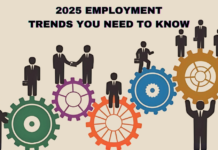The phrase artificial intelligence (AI) refers to the basic idea of modeling intelligent behavior with computers and little to no human intervention. Most people agree that artificial intelligence began with the development of robots. The name comes from the Czech word robota, which refers to forced labor using biosynthetic machines.
Artificial intelligence was formally established in 1956 and is defined as the science and engineering of creating intelligent machines. The phrase can be used to describe a wide range of topics in medicine, including human biology, robotics, medical diagnosis, statistics, and even today’s “omics.” This review focuses on artificial intelligence in medicine, which includes two primary branches: virtual and physical.
Nowadays, artificial intelligence is regarded as a subfield of engineering that applies innovative ideas and creative fixes to difficult problems. Computers may eventually surpass human intelligence if advancements in software development, technological speed, and capacity are sustained. Current cybernetics has made a significant contribution to AI development that cannot be overlooked.
 So, let’s focus on artificial intelligence in medicine and health systems:
So, let’s focus on artificial intelligence in medicine and health systems:
Artificial Intelligence in Medicine: The Virtual Branch: Machine learning, also known as deep learning, is a virtual component that is represented by mathematical algorithms that enhance learning by experience. Three categories of algorithms for machine learning exist: three types of learning: unsupervised, supervised, and reinforcement.
Artificial Intelligence in Medicine: The Physical Branch: The second way that artificial intelligence is being used in medicine involves tangible items, medical equipment, and increasingly advanced robots that assist in providing care (carebots). The use of robots as assistants—for instance, a robot companion for the elderly population experiencing cognitive decline or limited mobility—may be the most promising strategy. The most advanced models of this technology are carebots made in Japan. Robots are employed in surgery as single performers or as assistants to surgeons.
Use of Robots to Monitor the Effectiveness of Treatment: In contexts like rehabilitation, robots can also be helpful in assessing how human performance has changed. AI might also be used to monitor the directed distribution of medications to certain organs, tissues, or cancers. The recent development of nanorobots, for instance, to address delivery issues resulting from medicinal agent dispersion difficulties into a target region, is a promising development.
Conclusion:
Much like genetics will continue to provide personal services, artificial intelligence for personal use is here to stay. Thus, it’s critical to think about how AI will advance the advancement of our healthcare systems.






